Leukemia: Know the Symptoms, Causes, Diagnosis & Treatment
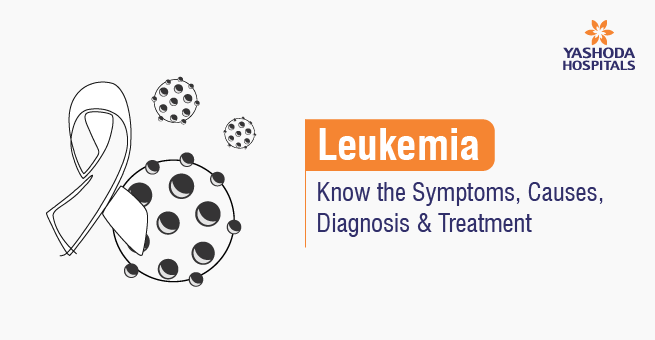
Leukemia is a type of cancer that starts in the bone marrow and leads to abnormal white blood cells being produced at an excessive rate. Its effects are felt by everyone around it, irrespective of age or social standing. Although improvements in treatment have largely changed outcomes, patients’ pathways (along with those of their families) are usually complicated. Such statements show us why this blog exists: to offer information and emotional aid about how best to overcome leukemia.
What is Leukemia?
Leukemia is an umbrella term for hematopoietic or blood cancers. Leukemias are of different types. The types of leukemias depend on the lineage of blood cells that undergo malignant transformation and their rate of proliferation, whether fast or slow. Essentially, leukemia is a cancer that affects the body’s blood-forming organs, like the bone marrow and lymphatic systems. In leukemia, a single cell within the bone marrow has its DNA altered (mutated) and cannot grow or act normally. In general, white blood cells, red blood cells, and platelets are formed from the cells produced by the bone marrow.
Leukemia is frequently seen among adults over 55 years old, while it is also the most prevalent among individuals under 15 years old. The different types of leukemia exist, some more common in children and others in adults; this means that therapy depends on the specific form and various determinants.
Causes and Classification of Leukemia
Causes of Blood Cancer
Usually, no one knows the exact causes of leukemia, but chromosomal alterations, mutations, or having some uncertain chromosomes will cause it. Whatever it is, the major causes of blood cancer might be due to:
- DNA damage, which in turn causes uncontrollable growth and division of developing blood cells.
- Losing healthy blood cells.
- Rapid abnormal growth of blood cells.
- Overcrowding of the blood by cancerous cells.
- Outnumbering healthy ones with cancerous cells.
Leukemia Classifications
Leukemia is classified according to its rate of development and severity, as well as the type of blood cell that is involved. In terms of its rate of development, leukemia is classified into:
1. Acute leukemia: It occurs when most of the abnormal blood cells are not mature and cannot carry out their normal functions. It can escalate very quickly.
2. Chronic leukemia: It occurs when there are some immature cells while other normal ones function properly. It worsens at a slower pace compared to acute forms.
Types of Leukemia
These leukemia types are classified according to what cells are involved:
1. Lymphocytic (or lymphoblastic) leukemia: This affects cells from the bone marrow that develop into lymphocytes—a form of white blood cell.
2. Myelogenous (or myeloid) leukemia: This affects the marrow cells responsible for making red blood cells and platelets, as well as other types of white blood cells.
As in the cells mentioned above, leukemia is categorized into four main types:
- Acute lymphoblastic leukemia (ALL): This is the most common type of childhood leukemia. It may invade the lymph nodes and the central nervous system.
- Acute myelogenous leukemia (AML): This is the second most common type of childhood leukemia and one of the three most prevalent forms for adults.
- Chronic lymphocytic leukemia (CLL): This is the other form of adult leukemia that is commonly found. Some forms of CLL will be stable for years without any treatment required, whereas in others you cannot produce normal blood cells; hence, it is imperative that you undergo treatment.
- Chronic myeloblastic leukemia (CML): With this particular type, one could go for long periods without observable symptoms at all. Even so, it becomes evident when a blood test shows an abnormal result during a general check-up. Individuals who are 65 years old and older are more likely to suffer from this condition as compared to their younger counterparts.
Symptoms and Risk Factors of Leukemia
Blood Cancer Symptoms
Usually, leukemia symptoms vary based on the type and severity. Some of the common symptoms of leukemia include:
- Weakness and easy fatigue.
- Unusual bruising and bleeding.
- Swollen lymph nodes, liver, spleen, or tonsils.
- Shortness of breath.
- Skin changes like petechiae or darker patches.
- Paler skin than usual.
- Fever or chills.
- Severe or frequent infections.
- Bone or joint pain.
- Headaches.
- Weight loss.
- Night sweats.
Initial symptoms of leukemia are infection, bleeding, swelling of lymph nodes, fatigue, and shortness of breath. However, the individuals may not be affected by all the symptoms discussed above. Symptoms usually change from person to person based on the type and severity of the leukemia.
Leukemia Risk Factors
Many people may have doubts about their risk of leukemia or who is at risk of leukemia. Some of the risk factors associated with leukemia include:
- Genetic Conditions: Leukemia is likely in people born with Down syndrome, Klinefelter syndrome, and neurofibromatosis, among others.
- Smoking: people who smoke or those who are regularly exposed to second-hand smoke have higher chances of getting acute myeloid leukemia (AML).
- Radiation Exposure: High levels of radiation exposure make leukemia more probable.
- Race and Ethnicity: Latino, Hispanic, or Spanish-descent children are also likely to develop leukemia. Asians and blacks are also statistically more prone to AML.
- Work Exposure to Chemicals: Work exposure to harmful chemicals such as benzene and formaldehyde increases the chances of getting leukemia.
- Gender: In terms of gender, males at birth are slightly more likely than females at birth (AFAB) to develop leukemia.
- Family History: A family history with leukemia may lead to one having a greater propensity for it too.
- Other Cancer Treatments: Some cancer treatments, for example, radiation therapy or chemotherapy, can cause leukemia.
Are There Any Suspicious And Long-Lasting Symptoms? Don’t Wait.
Diagnosis and Treatment of Leukemia
Leukemia Diagnosis
The diagnosis of leukemia involves:
- Physical examination and complete medical history evaluation: The doctor will examine for signs of leukemia, including bleeding gums, pallor, bruises, fever, or enlarged lymph nodes in the spleen or liver. Doctors also inquire about the feelings and other symptoms the patient might be experiencing.
- Complete blood count (CBC): This test looks at the number and maturity of various cell types in your blood. If one has leukemia, they will probably have more white blood cells than usual and may even have a reduced amount of red blood cells and platelets due to being replaced by cancer cells. Sometimes primary care providers take CBC as part of their annual physicals.
- Other blood tests: flow cytometry and peripheral blood smears are examples of tests used to check for cancer cells in the patient’s bloodstream and other signs of leukemia, like immature cells. With this, it is possible to know what type of leukemia is present in an individual. Additionally, the physician could carry out some liver function tests, kidney function tests, and some hemostasis tests on patient serum samples.
- Spinal tap: It can also be referred to as a lumbar puncture, and it examines if leukemia has infiltrated the nervous system. In order to conduct a spinal tap, the practitioner will numb the skin overlying the lower back area. They will then withdraw some cerebrospinal fluid from between two lumbar vertebrae in the lower back region. The laboratory will analyze this sample for cancer cells.
- Bone marrow aspiration (biopsy of bone marrow): When there’s an abnormal white blood cell count, a doctor may perform this procedure. It usually involves inserting a long needle into the pelvic bone with a suctioning mechanism that extracts fluid from it. The sample is then analyzed for cancerous leukemia cells in the laboratory. It indicates how many abnormal cells are present in the bone marrow, thus confirming a leukemia diagnosis through a bone marrow biopsy.
- Radiological examinations: The doctor can use tests such as CT scans, MRIs, or X-rays that are used to take pictures of the body so that they can see how leukemia is impacting an individual.
Leukemia Treatment and Management
Based on the age, health status, or stage of the leukemia, treatments for leukemia are considered. Common treatments may include:
- Chemotherapy: Most leukemia patients receive chemotherapy. This is because chemotherapy involves using drugs to destroy leukemia or prevent its further spread. During treatment, the drugs (medications) could be taken as pills, injections into a vein, or underneath the skin. Usually, one will get a mixture of chemotherapy medications.
- Immunotherapy (biologic therapy): Drugs that help the immune system fight off leukemia are used in this treatment method. It helps to identify cancer cells in the body so that it can make more immune cells that can tackle them.
- Radiation therapy: It uses strong energy beams or X-rays to kill leukemia cells or stop them from growing. During the process, a machine administers radiation to the exact points in the body where cancerous cells reside or distributes radiation across the entire body. Sometimes it is through both methods that radiation will be applied before undergoing a hematopoietic cell transplant, for instance.
- Targeted therapy: In this, the medicines are made to target particular areas of a leukemia cell (such as a protein or gene) so that they can prevent them from taking over other normal blood cells. These therapies may work by preventing the growth of leukemia cells, depriving them of their blood supply, or killing them outright. Such treatments are less likely to harm healthy tissues.
- Bone marrow transplant: It is also known as a stem cell transplant or hematopoietic cell transplant. This kind of treatment essentially restores the cancerous blood-forming cells that were destroyed by chemotherapy and/or radiation instead of newer, healthy hematopoietic cells. The oncologist might eliminate these healthy cells from the blood before chemotherapy and radiation even begin, or they could have originated from someone else’s body. They then reproduce, thus creating new marrow as well as blood components.
- Chimeric antigen receptor (CAR) T-cell therapy: It is basically a recent class of therapy that takes T-cells that are responsible for fighting infections in the body and modifies them to target leukemic cells before putting them back into the same patient’s body via infusion.
- Surgery: Surgery, such as a splenectomy, is not typically used to directly treat leukemia, but it can sometimes alleviate its effects on the body, such as removing cancer cells from the spleen and promoting comfort. It is done in some rare cases.
Conclusion
Leukemia, a complex blood cancer, has seen significant advancements in diagnosis and treatment, including targeted therapies and bone marrow transplants. However, early detection, specialized care, and ongoing research are crucial for improving survival rates and minimizing side effects.
Yashoda Hospitals in Hyderabad is renowned for its expert panel of hemato-oncologists, hematologists, and state-of-the-art infrastructure for bone marrow transplants. The team provides personalized, curative treatment plans tailored to each patient’s age and condition, aiming to enhance the quality of life for individuals with blood cancers and related conditions.
Commonly asked questions
-
What are the phases of leukemia treatment?
The treatment for leukemia could take time or come in stages, whereby every stage has its own targets. In induction therapy, a remission is achieved through the killing of leukemia cells, while the consolidation phase aims at eradicating those tiny cells that were not discovered, hence stopping cancer from reappearing. Lasting about two years, maintenance therapy eliminates the cells that did not die out during the first two phases, thus stopping a relapse from taking place.
-
What is the survival rate of leukemia?
The 5-year survival rate for all leukemia subtypes is 65.7%, with the most common form being in older adults. In the UK, 4 in 10 new cases occurred in individuals aged 75 and over, with the highest rates occurring in the 85–89 age group. Leukemia is also a common cancer for people under 20 years old, with higher survival rates for younger individuals.
-
Can leukemia be cured?
Leukemia has no specific cure, but some individuals can reach a long-term remission state. Cure signifies the absence of cancer, and hence no treatment is required in the future. However, determining if someone is completely free from leukemia proves difficult. Long-term remissions last from weeks to years and sometimes do not recur. New treatment options may be suggested by oncologists or stem cell transplant surgeons during this period when remission takes place. To develop a tailor-made treatment strategy, the health care team will partner with one to ensure patients are always on top of things when it comes to their health condition.
-
Is blood cancer curable in the first stage?
Blood cancer can be treated in its early stages, improving the chances of recovery with early detection and treatment. Nevertheless, it is important to note that prognosis is dependent on several factors, such as type, stage, and individual features like age, health, or response to treatment. Therefore, it is essential to consult an oncologist for personalized evaluation and management.
References:
- Introduction: https://www.cancer.gov/types/leukemia
- Classification: https://www.webmd.com/cancer/lymphoma/understanding-leukemia-basics
- Types: https://my.clevelandclinic.org/health/diseases/4365-leukemia
- Diagnosis; https://www.mayoclinic.org/diseases-conditions/leukemia/diagnosis-treatment/drc-20374378
- Treatment: https://www.healthline.com/health/leukemia#treatment


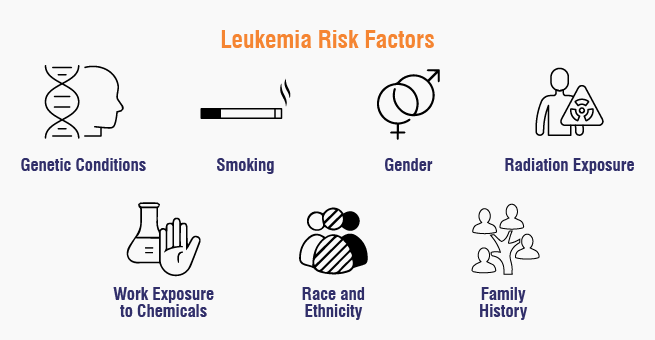
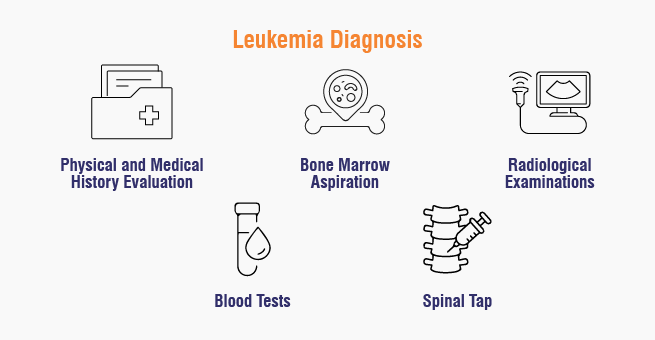
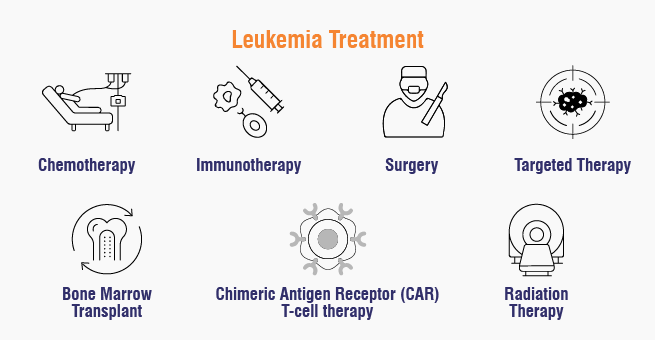

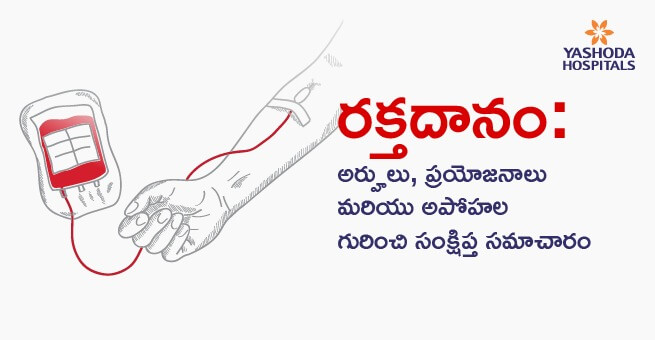



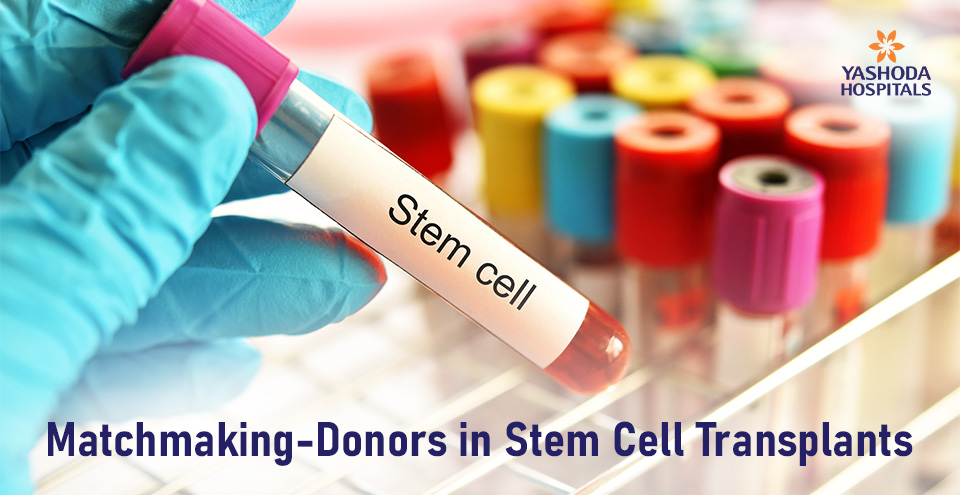





 Appointment
Appointment WhatsApp
WhatsApp Call
Call More
More

